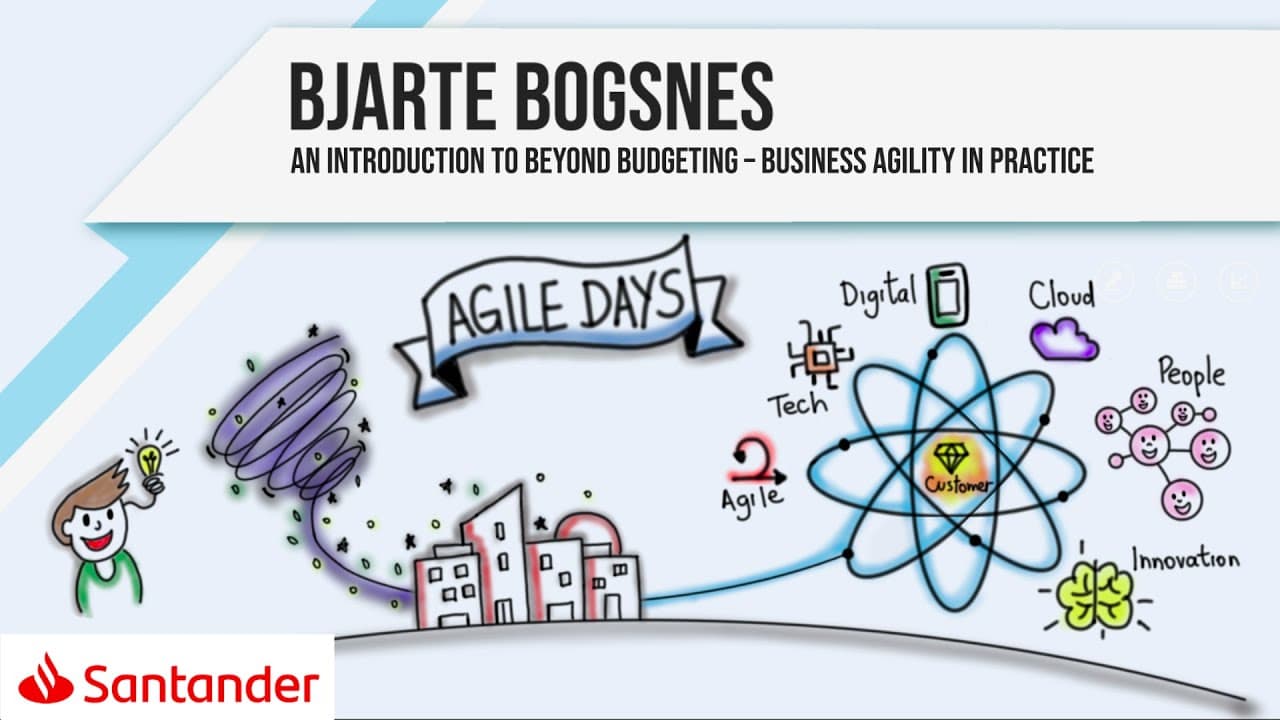The topic for today is Beyond Budgeting or Business Agility, because that is essentially what Beyond Budgeting is about. It is a somewhat misleading name. The purpose of Beyond Budgeting is not necessarily to get rid of budgets. The purpose is to create organizations that are more adaptive, more flexible, more dynamic, more human, or—if you will—more agile.
In order to do that, we need to change traditional management. At the core of traditional management, we find the budgeting process and the budgeting mindset, both of which have a lot of problems.
I would argue that traditional budgeting is very much the antithesis of agile. Let’s take a look at some of these problems. This is a long list:
- It is a very time-consuming process.
- Assumptions are quickly outdated—we know all about that, especially in these COVID times.
- It can stimulate unethical behaviors, such as low-balling, gaming, sandbagging, resource hoarding, and internal negotiations.
- It creates a false sense of control. It might feel comfortable to have next year planned in a million details, but in reality, we don’t know what will happen.
- Budgeting forces us to make decisions too early—often too high up in the organization.
- We decide in the autumn of the year before what we shall do next year, and the cost of it.
- Budgets can prevent us from doing things we should do—because they are not in the budget.
- Budgets can also force us to do things we shouldn’t—because they are in the budget.
- The infamous "spend it or lose it" mindset.
- Budgets act as both a ceiling for costs and a floor—meaning they tend to be spent completely.
- Defining good performance as merely "hitting the budget numbers" is a narrow, mechanical, and outdated way of measuring success.
- We need a richer, broader, and more intelligent performance language.
Last but not least, there are conflicting purposes in a budget that many haven't thought about. Most people recognize the other problems listed, but this one is key, and I will come back to it in a minute.
Why Do Companies Continue Using Traditional Budgeting?
I have shared this list of problems with hundreds of thousands of people around the world in the 25 years I have worked with Beyond Budgeting. Interestingly, most people agree—executives, managers, finance people, and others. Yet, the majority of companies continue to use traditional budgeting. Why?
One reason, beyond the usual statements of "we’ve always done it this way" and "everybody else is doing it," is that these problems are often seen as irritating itches rather than symptoms of a much bigger systemic problem. But that is exactly what they are.
This process was invented roughly 100 years ago. It is an old management technology. The inventor, James O. McKinsey—the founder of McKinsey Consulting—probably had the best of intentions at the time. Back then, budgeting helped organizations perform better. It may have worked 100 years ago, even 50 years ago. But today, this way of managing and thinking has become a barrier rather than a support for performance.
How Do We Solve This?
How can we get started on a Beyond Budgeting journey? That last problem—conflicting purposes—is actually key here.
If we ask ourselves, "Why do we make budgets?", there are actually three different reasons:
- Setting targets: Financial targets, sales targets, production targets.
- Forecasting: Trying to predict what next year could look like in terms of cash flow and financial capacity.
- Resource allocation: Distributing money and resources across the organization.
At first, it might seem efficient to do all three in one process with one set of numbers. But this is also the problem. For example, when finance teams ask salespeople for next year’s best estimate, the number they provide will come back to them as a sales target. If there’s a bonus tied to hitting that target, this insight influences the number they send. Similarly, cost and investment estimates are influenced by the memory of past budget cuts.
The solution? We must separate these three processes:
- Targets: Aspirations—what we want to happen.
- Forecasts: Expectations—what we think will happen.
- Resource allocation: Optimization—ensuring scarce resources are best utilized.
Separating them allows for different numbers, such as setting ambitious targets while keeping forecasts realistic. More importantly, it allows for process improvements that are impossible when everything is bundled into one rigid budget.
Real-World Examples
Several companies have successfully embraced Beyond Budgeting:
Miles
Miles, a Norwegian IT software company, has no budgets and no targets—just great performance. Employees can buy whatever PC they want, attend any conference, and travel wherever they need to, with no budget restrictions. The only control mechanism? Transparency. They must publicly share what they spent and why.
Handelsbanken
Handelsbanken, a bank with 850 branches in Northern Europe, has operated without budgets, targets, or individual bonuses since 1970. The result? It has outperformed the industry average every single year since 1972 and is one of the most cost-effective banks in Europe.
Final Thoughts
The Beyond Budgeting principles provide guidance on management processes and leadership—focusing on purpose, values, transparency, and autonomy. If you compare them, you’ll notice strong similarities with the Agile Manifesto. In fact, Beyond Budgeting emerged a few years before Agile, without any initial connection between the two communities.
Many organizations today are on this journey, in various forms. While their approaches differ, they are all inspired by Beyond Budgeting.
That’s what I wanted to share with you today. This was the short version—there’s much more to explore, from problem details to implementation strategies. Thank you for listening!



